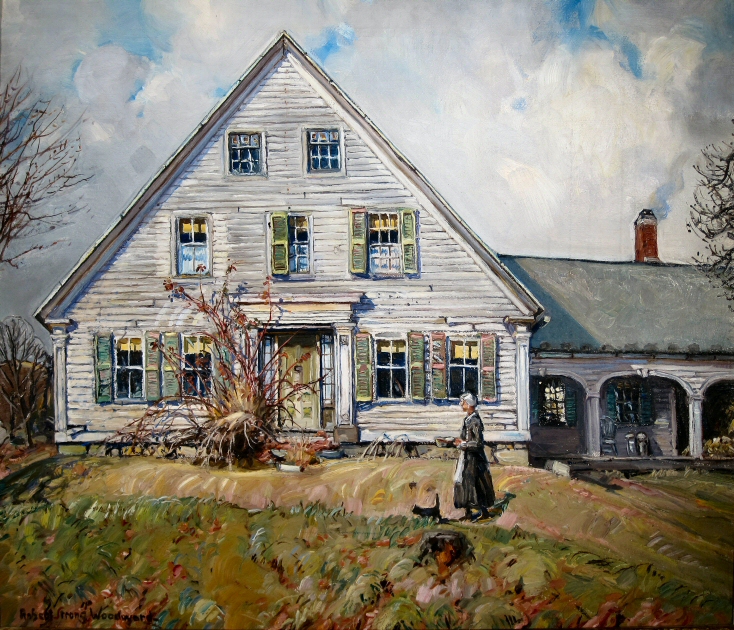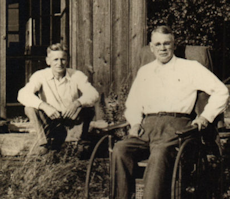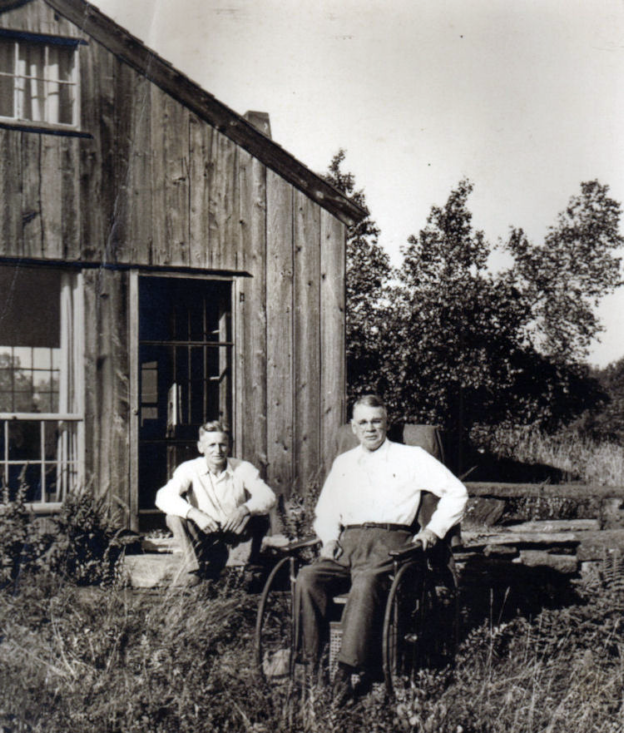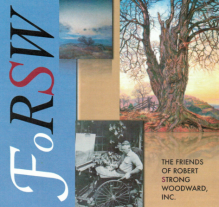Quick Reference
c. 1942
Unknown
Pastel on Board
Landscape
Houses, Trees, People, Barns
24" x 34"
Grand Central Galleries (NYC),1942
Unknown
NA
Related Links
- See also the...
 Houses Gallery to view related pieces.
Houses Gallery to view related pieces.
- See also the Even in November Gallery to view related pieces.
- See also the People & Livestock Gallery for related pieces.
- See also the Barns Gallery to view related pieces.
- See our page devoted to ...
 RSW friend, educator, and amateur photographer F. Earl Williams
RSW friend, educator, and amateur photographer F. Earl Williams
Featured Artwork: The Wide Spreading Elm
RSW's Diary Comments

 RSW and Williams posing by
RSW and Williams posing by
the Heath Pasture House & Studio.
Editor's Note:
Woodward did not keep records of his pastel paintings he called chalk drawings. In this case, we would know less than nothing about the chalk drawing if not for the letter to Woodward's friend, F. Earl Williams who apparently once had this artwork in his possession. For how long, we do not know so we cited the year with circa 1942, meaning within five years of that date. See below ⮟
The following quote is from a letter RSW wrote to F. Earl Williams regarding Wide Spreading Elm:
"The day after my return I received a check of $75 ($100 less 25% commission) for the sale of The Wide Spreading Elm---the chalk which you originally had, but exchanged for the "winter farm in the hills." So, that is now "out of the family too (it was at the Grand Central Art Galleries.) Before long I expect the Pettis family to come to take away two more chalk drawings."
Additional Notes
-widthGRP.png?url=photos/wide_spreading _elm(25)-widthGRP.png)
 To help you with the scope of the width of
To help you with the scope of the width of
the elm tree to the house we made this graphic.
This chalk drawing was purchased by a Massachusetts collector for $1,850 plus shipping charges or
for an increase of 1850% its original price far outpacing inflation. The dealer listed it initially
for $2,200 indicating the estimated value without knowing its original sale price. As a matter of
fact, the pastel paintings are much more appreciated today than in his time.
What is not known to us is why it originally sold for such a low price for one of his largest chalk
drawings, in 1942 on less, when his average price at that time was $150. We have never seen a chalk
priced under $125 dollars and the highest was a $175. The artist cared very much about his pastel
drawings because it kept him close to his origins as an illustrator / draftsman. But even more, he
continued to make them throughout his career as a way of providing quality art at affordable prices.
This is not to say $100 is cheap in 1940, but rather, it is attainable to those who save and work as
a teacher or secretary... a small business owner or farmer.
---------------------------------------------------------------------------------------------------------------------------------

 A closer look at the woman in front of
A closer look at the woman in front of
the house with her dog on the side porch.




734.png)